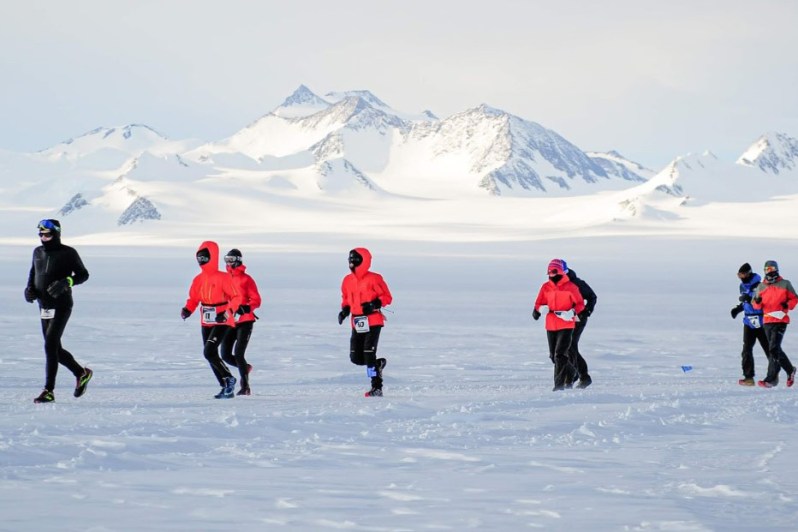Completing one marathon shows an impressive degree of strength, dedication, and athletic prowess. A full marathon is 26.2 miles, and in 2023, the average running time for men was 4 hours and 14 minutes. How long it takes you to cross that finish line depends on factors like your fitness level and age. Elite marathoners might take just over two hours, whereas others might take up to eight hours or longer. One runner decided to run seven marathons on seven continents, which is an interesting and challenging goal to set your mind on.
7 marathons on 7 continents in 7 days

Mike Rogers is a 71-year-old runner from Texas who’s part of the USA FIT Lubbock run club. While you might be picturing your typical marathon, Mike started this fitness challenge in teeth-chattering temperatures below freezing in Wolf’s Fang, Antarctica. Mike was one of 55 people who completed the Great World Race in November, covering seven marathons on all seven continents in seven days to help raise money for charities such as Make a Wish. Seven is the magic number when it comes to the Great World Race.
The race took Mike to various destinations, including:
- Cape Town, South Africa
- Perth, Australia
- Istanbul, Turkey
- Cartagena, Columbia
Mike had blisters and little to no sleep as he powered on, facing the elements from freezing rain to rough terrain and 100-degree weather in Cartagena, Columbia. He flew home to the United States for the final marathon in Miami. While his friends and family thought he was insane, Mike happily collected his medal when he crossed the finish line.
Reversing prediabetes and managing blood pressure

Many people have found that being more active has improved their wellness. Studies show that running regularly lowers resting blood pressure. Mike is one of those people who’ve successfully reversed prediabetes and helped manage his blood pressure and asthma by putting on his running shoes and heading out the door.
Top tips to train for a marathon

People have their own ways of training for a marathon. Mike Rogers ran about 15 to 20 miles every day, about four or five times a week, in preparation for the Great World Race. Here are some top tips to train for a marathon:
- Build your mileage gradually over time.
- Incorporate a mix of sprints and longer endurance runs to improve your agility and stamina.
- Practice tempo runs, intervals, and other exercises to enhance your overall fitness and cardio capacity.
- Stay motivated by finding an accountability partner or reminding yourself that you’re improving your health and fitness by taking on this challenge.
- Be kind to yourself.
- Use a fitness tracker to log your progress.
- Include sufficient rest days to give your muscles time to recover and avoid burnout.
- Drink plenty of water to stay hydrated and maintain optimal nutrition to fuel your body for those longer runs.
- Walk when you need to.
- Find the right training schedule that you know you’re more likely to stick to.




